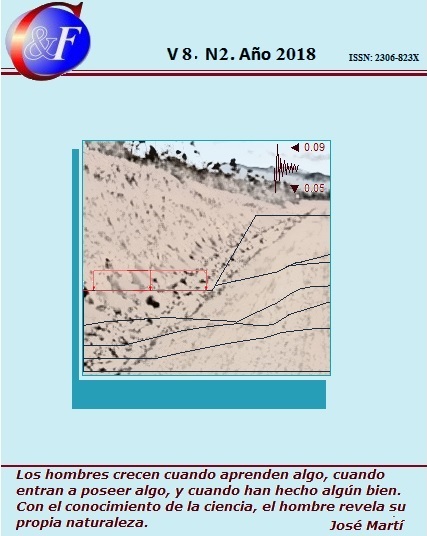Inclusion for a student with visual disability in High School Education
Keywords:
inclusion, visual disability, Teen, Higher Education.Abstract
A case study was presented in the city of Mexicali B.C., during the 2016-2017 school year, referring to an adolescent with visual disability who attends first and second semester of High School Education in the College of Scientific and Technological Studies campus Compuertas. During the intervention, it was oriented and collaborated in the indicated period with the staff and student. The instruments were applied: personal advice, interview and collaborative work with parents, talks with teachers and students on awareness and direct support within the classroom, having as an achievement the adaptation of the student in the school context, managing to approve the two semesters, and in teachers the application of curricular adjustments to the student, as well as the use of teaching materials.Downloads
References
FAMILYCONNECT. 2017. La sexualidad y los adolescentes con discapacidad visual. Disponible en: http://www.familyconnect.org/info/busca-por-edad/adolescentes/crecimiento-y-desarrollo-adolescentes/la-sexualidad/1235.
GONZÁLEZ, F. G. 2011. El alumno con discapacidad visual en la inclusión educativa. Folleto para el trabajo del psicólogo con estudiantes con discapacidad visual en el ámbito de la escuela inclusiva. Disponible en: http://www.foal.es/sites/default/files/docs/Libro_Foal2.pdf.
GONZÁLEZ, M. D. 2000. La escuela Inclusiva en respuesta de todo el alumnado. ADAXE –Revista de Estudios y Experiencias Educativas 16: 179-186.
LLERA, J. B. 2011. La educación inclusiva. Padres y Maestros/Journal of Parents and Teachers (338): 5-9.
LOBERA, J. (Comp). 2010. Guía Didáctica para la Inclusión en Educación inicial y Básica. Secretaria de Educación Pública, México.
ORGANIZACIÓN DE LAS NACIONES UNIDAS PARA LA EDUCACIÓN, LA CIENCIA Y LA CULTURA (UNESCO). 2008. La educación inclusiva: el camino hacia el futuro. En: Conferencia Internacional de Educación. Cuadragésima octava reunión. ED/BIE/CONFINTED 48/Inf.2., Ginebra, p. 1-32.
ROTELLA, C. & PARLANTI, S. 2003. Las habilidades Sociales de Adolecentes ciegos. Resumen de tesina de Licenciatura en Gestión de la Educación Especial. Facultad de Educación Elemental y Especial, U.N.Cuyo. 8 p. Disponible en: http://www.feeye.uncu.edu.ar/web/posjornadasinve/area2/Educacion%20especial/250%20-%20Rotella%20y%20Parlanti%20-%20FEEyE.pdf
SATAINBACK, S. W. 1992. Aulas inclusivas. Narcea, S.A. de Ediciones, Estados Unidos de Ameria.
ST. EDWARD'S UNIVERSITY. 2017. Teaching efectiveness. Austin Texas, EE.UU. Disponible en: https://cdn.educ.ar/dinamico/UnidadHtml__get__b83c5308-7a07-11e1-80d8-ed15e3c494af/index.html.
Published
How to Cite
Issue
Section
Esta obra está bajo una Licencia Creative Commons Reconocimiento-NoComercial 4.0 Internacional
La Revista Ciencia & Futuro es una revista de acceso abierto, todo el contenido está disponible gratuitamente sin cargo para el usuario o su institución. Los usuarios pueden leer, descargar, copiar, distribuir, imprimir, buscar o vincular los textos completos de los artículos, o utilizarlos para cualquier otro fin lícito, sin pedir permiso previo al editor o al autor. Todo lo anterior, de acuerdo con la definición de BOAI de acceso abierto.
Los autores que publican en esta revista están de acuerdo con los siguientes términos: Licencia Creative Commons Atribución-NoComercial permite que el beneficiario de la licencia tenga el derecho de copiar, distribuir, exhibir y representar la obra y hacer obras derivadas para fines no comerciales siempre y cuando reconozca y cite la obra de la forma especificada por el autor o el licenciante. Los autores pueden establecer por separado acuerdos adicionales para la distribución no exclusiva de la versión de la obra publicada en la revista (por ejemplo, situarlo en un repositorio institucional o publicarlo en un libro), con un reconocimiento de su publicación inicial en esta revista. Se permite y se anima a los autores a difundir sus trabajos electrónicamente (por ejemplo, en repositorios institucionales o en su propio sitio web) antes y durante el proceso de envío, ya que puede dar lugar a intercambios productivos, así como a una citación más temprana y mayor de los trabajos publicados (Véase The Effect of Open Access) (en inglés). Lo anterior debe realizarse siempre sobre el artículo ya publicado por Ciencia & Futuro.
Los autores mantienen el control sobre la integridad de sus trabajos y el derecho a ser adecuadamente reconocidos y citados.
A los editores se les otorgan derechos no exclusivos para publicar y distribuir.






